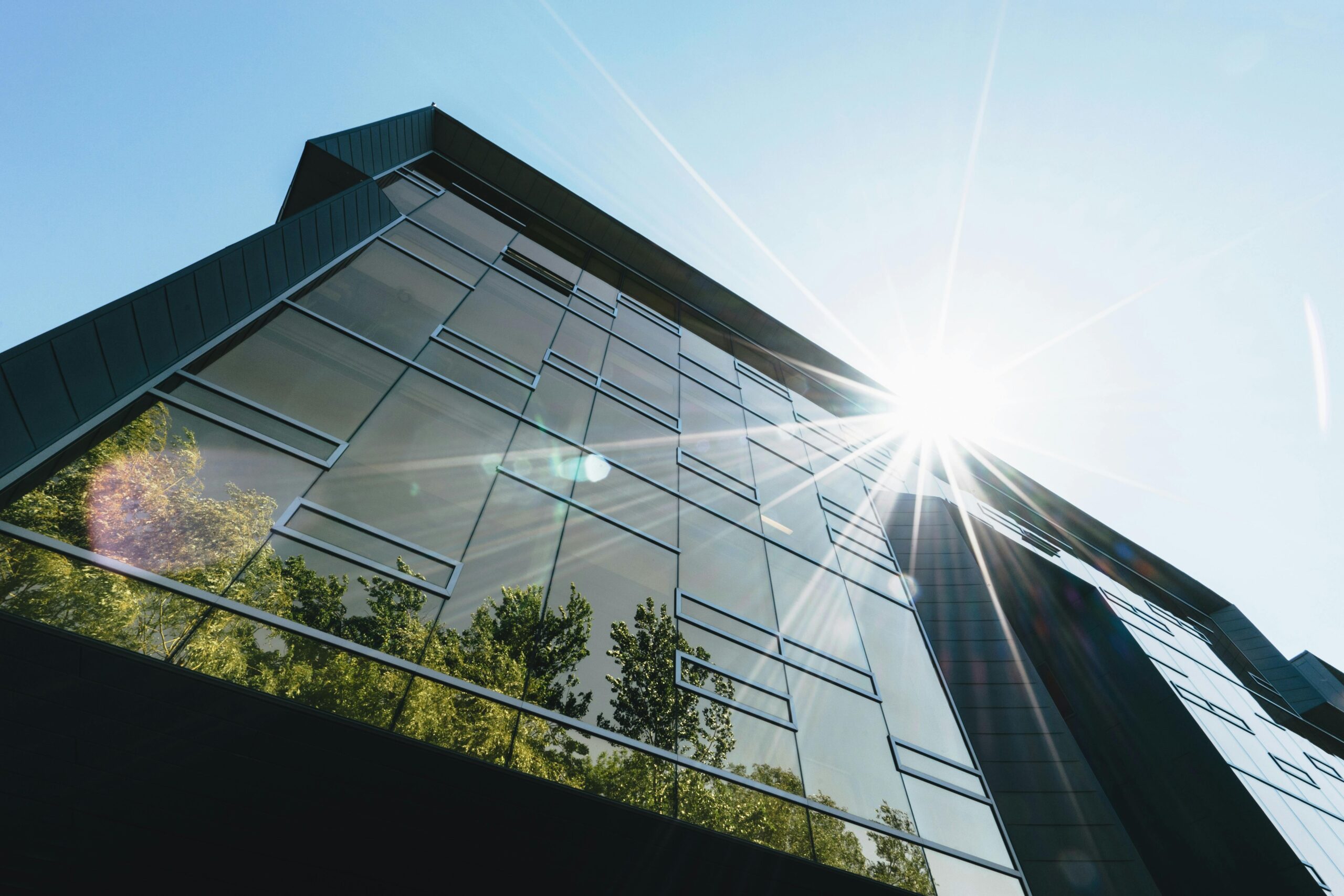
In the pursuit of sustainable building practices, architects and builders continually seek innovative solutions to enhance energy efficiency, reduce environmental impact, and improve indoor environmental quality. One such solution that has gained prominence is the application of window films. These thin, multi-functional layers applied to glass surfaces offer a range of benefits that align with green building certifications and sustainability goals.
Energy Efficiency and Reduced Consumption
Windows are a significant source of heat gain and loss in buildings, accounting for up to 35% of energy inefficiencies. High-performance window films address this issue by reducing solar heat gain through windows, allowing a space to maintain its internal temperature and eliminating hot spots. This reduction in heat transfer decreases the reliance on heating, ventilation, and air conditioning (HVAC) systems, leading to substantial energy savings. By improving energy efficiency, window films help lower overall carbon emissions associated with heating and cooling systems. This reduction plays a crucial role in a building’s environmental impact and its ability to meet green building standards.
UV Protection and Material Preservation
Window films block up to 99% of harmful ultraviolet (UV) rays, which are a primary cause of fading in interior furnishings, flooring, and artwork. By mitigating UV exposure, these films prolong the lifespan of interior materials, reducing the need for replacements and thereby supporting sustainability goals through material conservation.
Enhanced Indoor Environmental Quality
Glare from excessive sunlight can create discomfort for building occupants and increase the need for artificial lighting. Window films help control glare, creating a more comfortable visual environment and reducing eye strain. Additionally, by maintaining consistent indoor temperatures and reducing glare, window films contribute to improved indoor environmental quality, which is a key consideration in sustainable building design.
Contribution to Green Building Certifications
Incorporating window films can assist in achieving credits toward green building certifications such as LEED (Leadership in Energy and Environmental Design). By enhancing energy performance, improving thermal comfort, and contributing to daylighting strategies, window films align with the criteria set forth in these certification programs. For instance, window films can help in optimizing energy performance by reducing the energy load on HVAC systems, thereby contributing to LEED credits under the Energy & Atmosphere category.
Expert Insights
According to the Whole Building Design Guide, window films significantly reduce solar heat gain through windows, allowing a space to maintain its internal temperature and eliminating hot spots. This not only enhances occupant comfort but also reduces the strain on HVAC systems, leading to energy savings and extended equipment lifespan.
Addressing Common Myths
-
Myth 1: Window films make interiors too dark.
-
Fact: Modern window films are designed to allow ample natural light while reducing heat and glare. They can maintain a bright interior environment without the excessive heat gain associated with untreated windows.
-
-
Myth 2: Window films are only beneficial in hot climates.
-
Fact: While particularly effective in reducing cooling loads in warm climates, window films also provide insulation benefits in colder climates by retaining interior heat, thereby reducing heating costs.
-
-
Myth 3: Window films are difficult to maintain and have a short lifespan.
-
Fact: High-quality window films are durable, scratch-resistant, and easy to clean. When professionally installed and properly maintained, they can last over a decade.
-
FAQs
-
Q: Can window films be applied to existing windows, or do they require new installations?
-
A: Window films are designed for retrofit applications and can be applied to existing windows without the need for replacement, making them a cost-effective solution for enhancing building performance.
-
-
Q: Do window films affect the appearance of the building?
-
A: Window films come in various shades and finishes, including options that are virtually invisible. They can enhance or maintain the aesthetic appeal of a building while providing functional benefits.
-
-
Q: Are window films environmentally friendly?
-
A: Yes, by reducing energy consumption and extending the lifespan of building materials, window films contribute to environmental sustainability and can be part of a comprehensive green building strategy.
-
Conclusion
Window films play a pivotal role in sustainable building practices by enhancing energy efficiency, protecting interior materials, and improving indoor environmental quality. Their ability to contribute to green building certifications further underscores their value in modern construction and renovation projects. Building professionals and property owners are encouraged to explore window film solutions as a practical and effective means to achieve sustainability goals and create more comfortable, efficient, and environmentally friendly spaces.